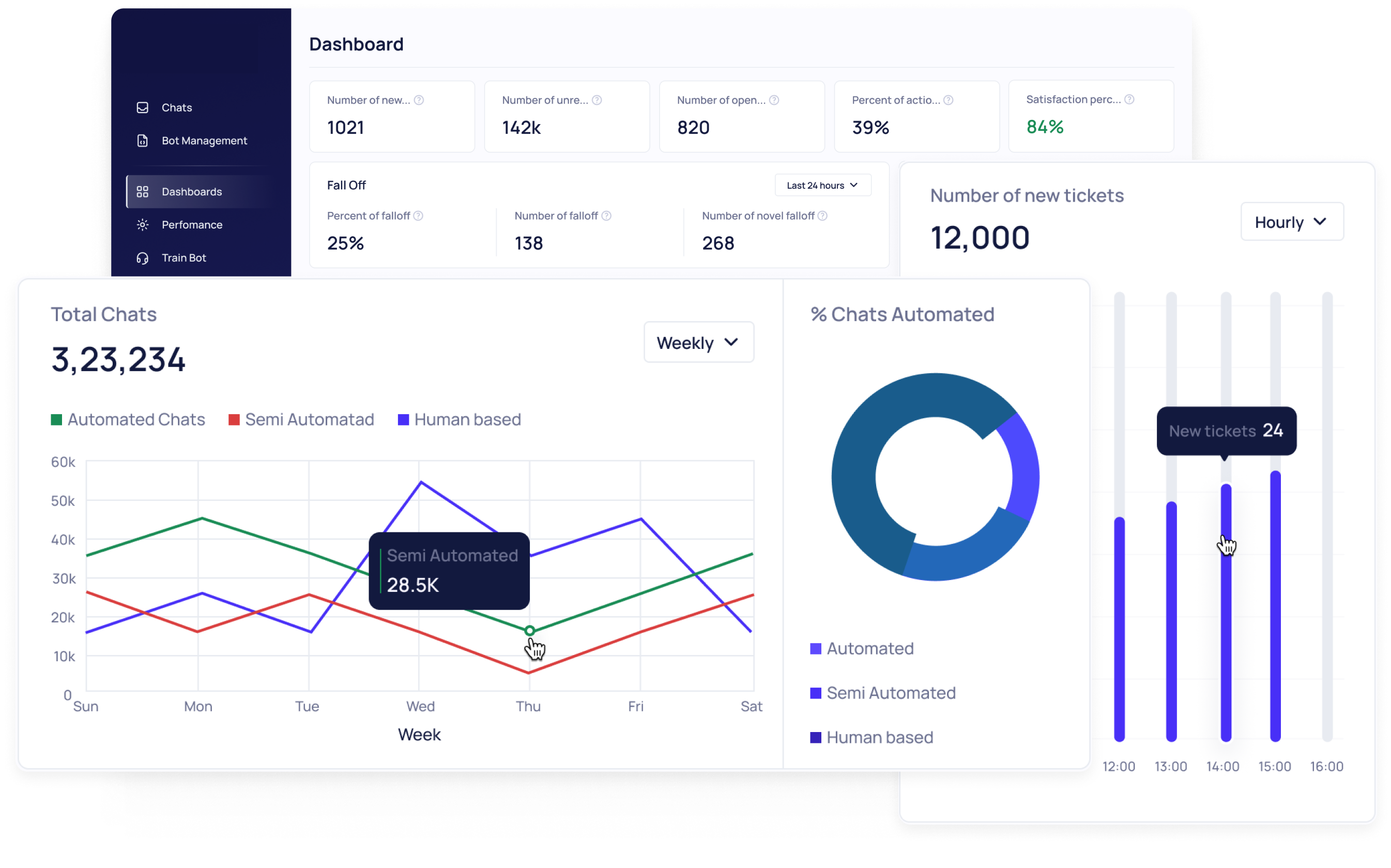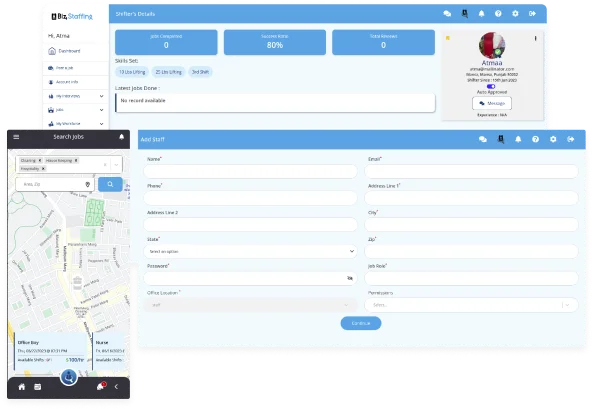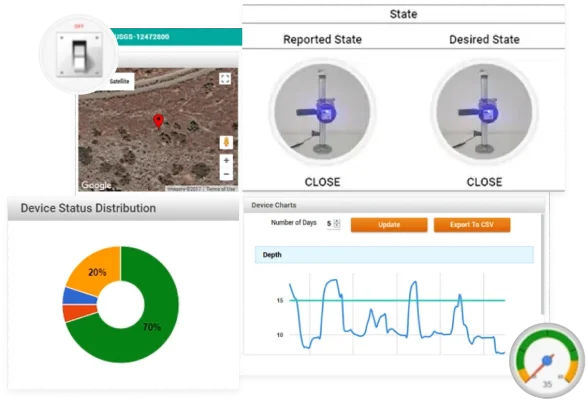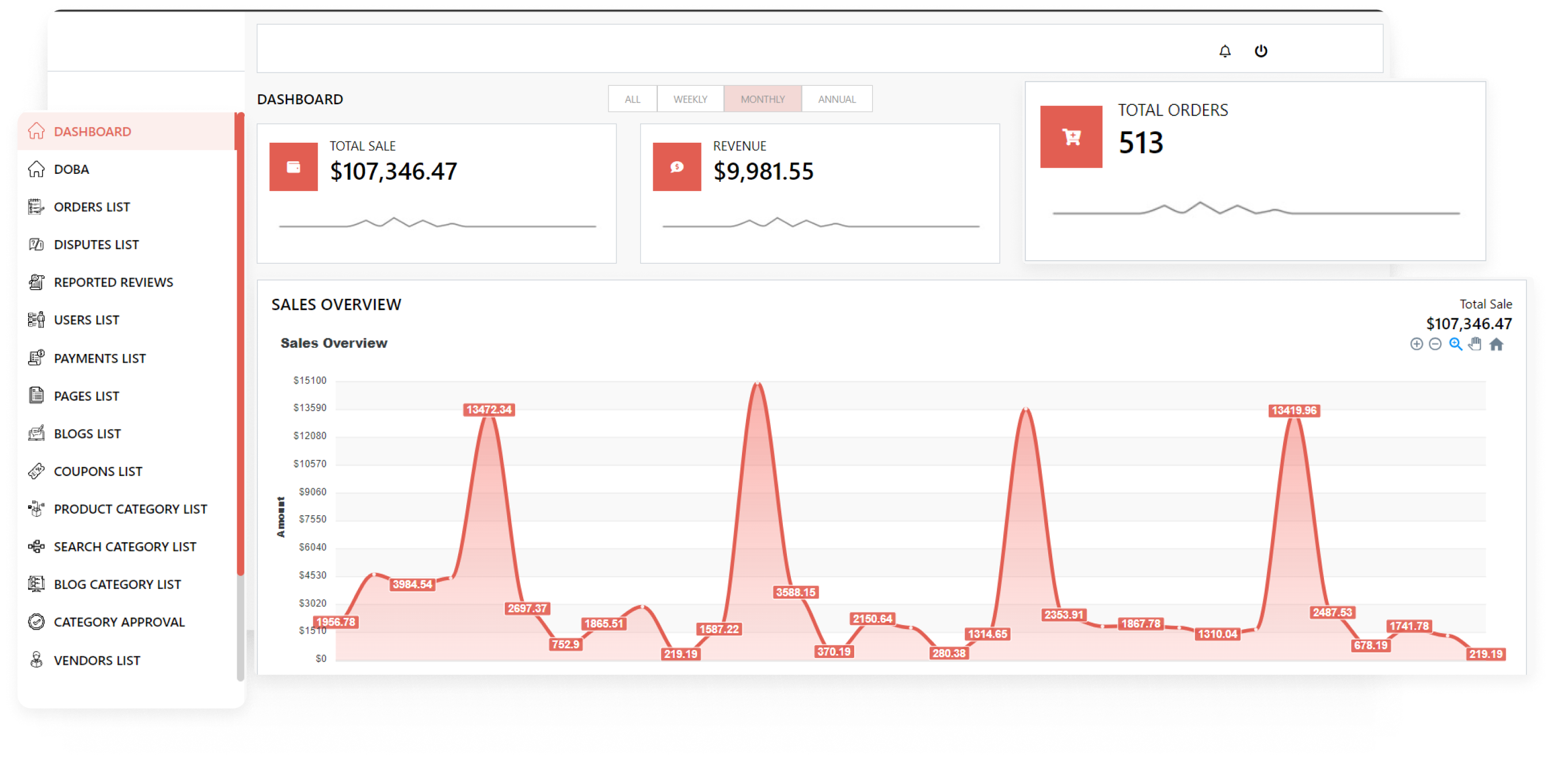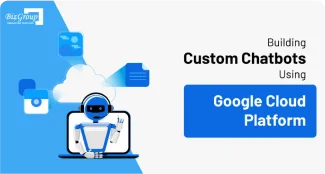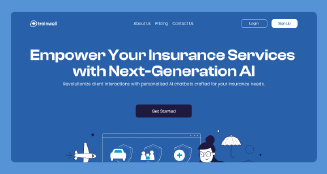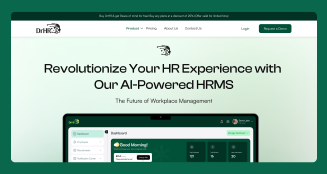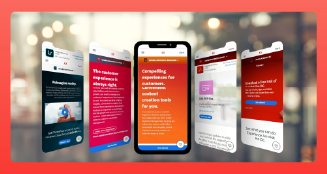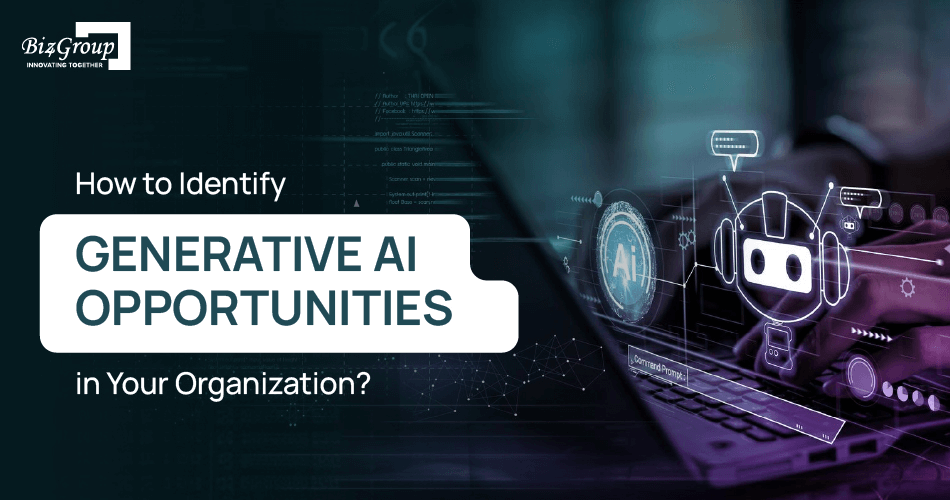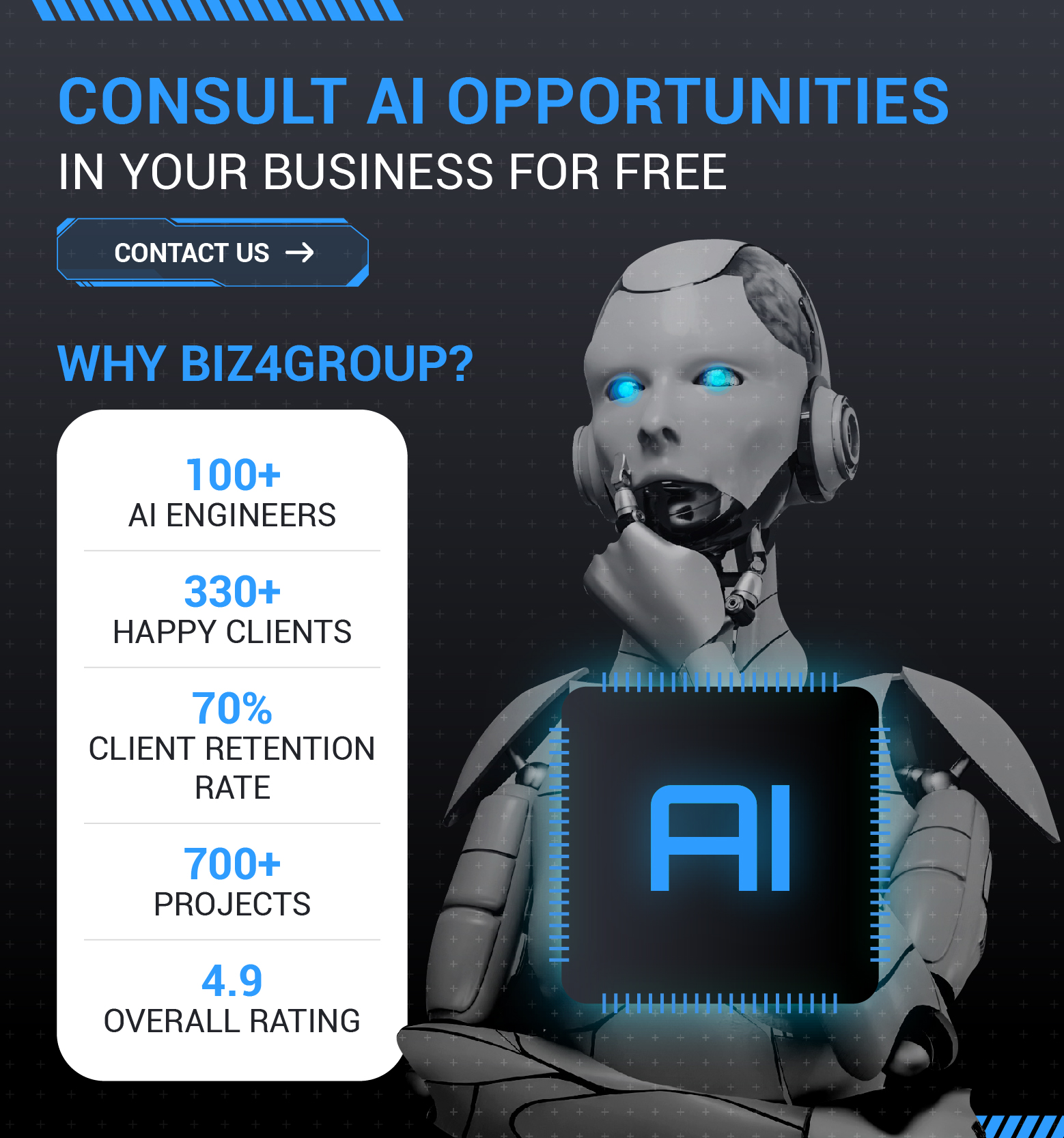How to Identify Generative AI Opportunities in Your Organization?
Generative AI can be called artificial intelligence which generates content. It can produce text, graphics and may even incorporate video. In contrast to the conventional AI where the systems process data and make suggestions, generative AI can create completely new content based on the input data, which was used to train the system. Some of the examples of models include ChatGPT that writes human-like text, and Stable Diffusion that generates images based on description.
The recent McKinsey Global Survey on AI found that 65% of organizations are regularly using generative AI technology. This number is nearly double the percentage from McKinsey’s previous survey ten months ago.

With the increasing adoption of generative AI, it’s high time for every organization to reap its benefits. While many struggle to identify the right generative AI opportunity, here is a quick guide on it.
Before getting on identifying the generative AI opportunity, let’s first understand what generative AI is and how it differentiates from traditional AI.
Understanding Generative AI
Generative AI is defined as a subset of AI which can generate new content of different types including textual, visual, auditorial, and other forms of content. These systems include some complex models such as Neural networks and are designed to learn from a large amount of data. Key capabilities include:
The type of text generation such as article writing and question answering.
-
Image generation (producing images from captions)
-
Music/vocal generation (synthesizing notes/words)
-
Text generation (answering questions and writing articles)
-
Video generation (generating short videoclips)
Difference between Generative AI vs traditional AI
Let’s explore the difference between generative AI and traditional AI:
Traditional AI:
-
Uses given data to draw a prognosis or to categorize something.
-
Such cases include customer attrition, demand for a product and the next best offer among others.
Generative AI:
-
Generates new data and information by utilizing the patterns derived from the data analysis.
-
Can create content in one or several media (text, picture, sound, and/or moving pictures).
Some of the generative AI application are for example,
-
Stable Diffusion: An AI model designed to create images based on the descriptions given to it. They can capture photographs, make paintings, and many others.
-
Morgan Stanley: It uses generative AI to assist financial advisors to make better use of the findings from published research.
-
Salesforce: Implemented generative AI into their CRM or Customer Relationship Management system.
-
Trainwell: The company is using AI avatars to train their insurance agents.

Identifying AI Opportunity within the Organization
The generative AI-ChatGPT opportunity analysis starts with evaluating the business requirements.
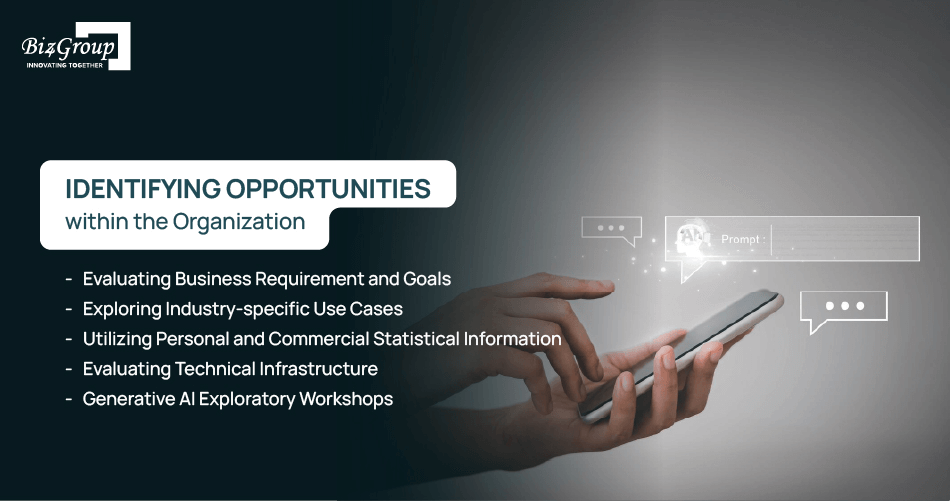
1. Generative AI Exploratory Workshops
AI workshops are the among the best options for identifying generative AI opportunity. Generative AI idea-generating brainstorming sessions are concept-focused meetings that are aimed at ensuring that an organization understands how it can apply generative AI in its operations. Such workshops involve key drivers, domain specialists, and technical groups to discuss and debate about possibilities of AI.
A. Advantages of Carrying out the Works for AI Opportunities
Focused Exploration: Workshops are therefore fully interactive and ensure that there is adequate time to discuss generative AI since participants are committed to the specific time and environment.
Cross-functional Collaboration: Depending on the problem-solving task, people from different teams are assembled which encourages cooperation and sharing of ideas and perspectives that ultimately results in innovation.
Identifying Use Cases: Made specific recommendations of areas of application of generative AI that address goals of a business are made from workshops.
Strategic Planning: The possible outcomes of the workshop might serve as a foundation for developing an effective strategy of utilizing AI.
B. Types of Workshops and their Key Elements for AI opportunity identification
Understanding Generative AI Basics:
-
Brief information on what generative AI is, what it can do, and use cases that prove its effectiveness.
-
Presentation of questions and answers to mitigate misconceptions among the participants.
Brainstorming Sessions:
-
Participated in the discussion on how generative AI can be deployed in the organization.
-
Asking everyone to look beyond the specific tasks and contemplate other areas of their business that could extend AI’s application.
Breakout Groups:
-
Separating participants into various subgroups and focusing on the functioning of the app in certain contexts.
-
Each of them can decide on the areas of interest, for example, customer or market relations, or production of the product.
Summarizing and Prioritizing Opportunities:
-
Assembling all the groups to compare the insights they make.
-
Debate and categorize the mentioned opportunities concerning the likelihood of working on them and the potential influence.
2. Evaluating Business Requirement and Goals
A. Evaluating Present Business Activities and Understanding Areas of Discomfort
This can be done by beginning with the assessment of current processes within an organization to look for pains. Some areas wherein generative AI can dispense value are customer relationship management, advertisement, and copywriting as well as data exploration. So, these areas can be a great generative AI opportunity.
B. Specific Steps Taken in Establishing Clear Objectives of the Integration of Generative AI
Set measurable targets on how and when generative AI will be deployed in your setting. The business goals could range from escalating the productivity and efficiency of customer service responses, generating content automatically, or increasing data analysis capacity.
Some examples of the Need of the Business:
Customer Service Improvement: Utilize AI chatbots to deal with simple customer queries to reduce the burden on agents and provide them with more challenging tasks.
Content Creation: Launch generative AI to develop advertisements, author newsletters, or generate captions for social media posts.
Data Analysis: Deploy the AI models to use big data and come up with desirable results and information within a short span.

3. Exploring Industry-specific Use Cases
Evaluating use cases for various industries
IT: With the help of the generative AI tools, generate code, debug it, and create perfect documentation for it.
-
Marketing: Create custom developed e-mails, social media and advertisement messages to better capture the customer’s attention.
-
Healthcare: Create artificial intelligence applications for producing artificial medical data for scientific analysis, preparing daily patient documents, and aiding diagnoses.
-
Finance: Utilize it for writing balance sheets, researching earnings trends and formulating possible investments.
-
Manufacturing: Design products’ simulations for testing and issuing the best version, determine servicing intervals, and enhance supply chains.
-
Education: Introduce smart AI educators that create individual learning content and learning evaluations.
If you find AI chatbots impressive as an AI opportunity for your organization, you should opt for custom chatbot development. We, at Biz4Group, have been helping businesses implement custom AI chatbots for their business’s specific use cases.
4. Utilizing Personal and Commercial Statistical Information
A. The Use of Data in Training Generative AI Models
Generative AI models rely on extensive datasets to identify linkages and produce desirable content. The more diverse and the broader data sets, the improved AI performance is experienced. Appropriate utilization of data is rather important when it comes to achieving the right strategy on creating generative AI applications that can function within a certain commercial context.
B. Collection of Primary Information Data within the Firm
Many businesses have huge loads of private data that can be utilized to instruct generative AI models. Sources of such data include:
-
Customer Interaction Data: Record of communication with customers; whether it is direct interaction through phone calls or face-to-face or even through written correspondences such as e-mails and chat history.
-
Operational Data: Details from activities within business firms that include sales registers, stock data, and the supply chain documents.
-
Marketing Data: Information that can be obtained from previous advertisements, social media platforms, and company website information.
-
Product Data: Maintenance records, service growth rates and comments regarding consumption and production regarding products and services.
5. Evaluating Technical Infrastructure
A. Assessing Today’s Possibilities of Technologies and Technology Gadgets
When introducing generative AI applications, it is vital to evaluate the organization's technical readiness. Key areas to assess include:
-
Software: Ensure that your present environment satisfies the conditions for AI creation by confirming that every application you employ for processing information, generating models, as well as deploying them can support AI development. If you lack the AI capabilities, you can always reach a generative AI development company.
-
Personnel: Analyse the capability of technical department in the organization. If from such processes areas of weakness emerge which will demand staff training or the introduction of new staff, record such areas.
B. Identifying areas of Improvement
-
Computing Power: If possible, the storage should be expanded, or more storage capability should be acquired to manage the AI jobs.
-
Data Infrastructure: The proposed approaches involve the general use of methods, some of which are modern state of the art, to develop dependable data management schemes for and to process huge data.
-
Skills and Expertise: Providing the current employees with seminars focused on AI and machine learning or hiring specialists in the sphere.

Start Your Generative AI Journey
If you’re an organization looking for an AI opportunity to implement generative AI to your operations but not sure where to get started, you should connect with AI consultants. We, at Biz4Group, provide AI development services that range from AI strategy creation to AI implementation.
Contact us today!
 info@biz4group.com
info@biz4group.com 
















